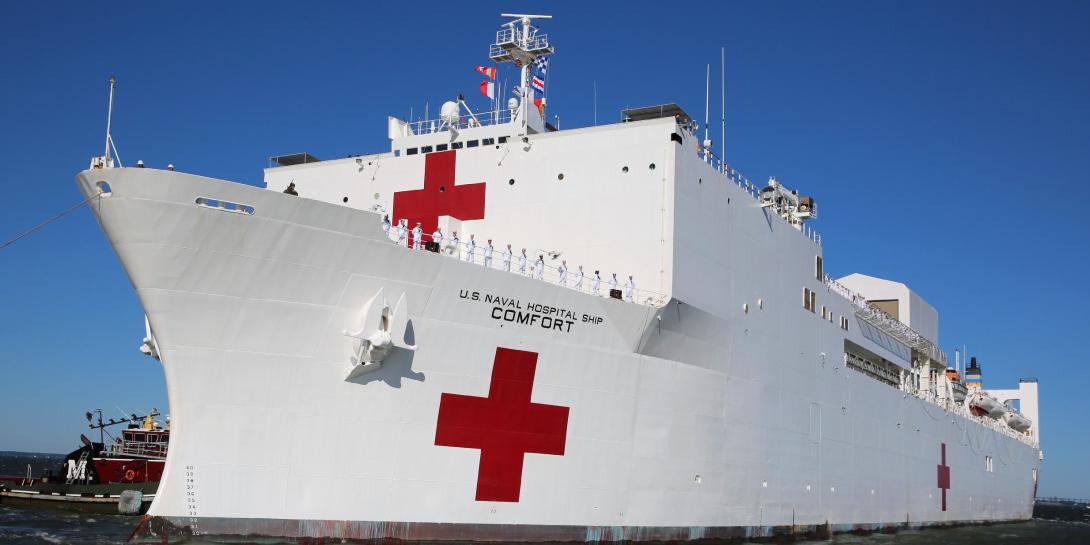DISA Expands Defense Networks to Homes During COVID
In response to the teleworking boom resulting from the COVID-19 pandemic, the Defense Information Systems Agency (DISA) dramatically increased network capacity, expanded access to virtual private networks and adopted new online collaboration tools, allowing thousands of Defense Department personnel to safely and securely work from home.
Addressing the audience tuning into the Army’s 2020 Signal Conference, which is sponsored by AFCEA and streamed online, Vice Adm. Nancy Norton, USN, the agency’s director, reported that the agency never shut down and never stopped working during the ongoing pandemic.
“We have not just survived, we have thrived while working with a distributed workforce,” she said.
VADM Nancy Norton, director, @USDISA, says the agency has not only survived but thrived during the pandemic.#AFCEA
— George Seffers (@gseffers) July 15, 2020
But the agency’s work doesn’t end with DISA employees. It supports the entire Defense Department and military services. In this most unusual case, that support has included an increase in circuit capacity of 500 gigabytes, the expansion of virtual private networks (VPNs) to more than 122,000 personnel and the purchase of Microsoft Teams collaboration tools and anti-virus software to deployed to new teleworkers across the department.
“What has happened across the cyber terrain since this pandemic started has been absolutely amazing. This has been truly unprecedented. My team has helped to orchestrate an exponential increase in capacity for the department: New circuits, increased bandwidth and increased conference call lines,” Norton reported. “We have ramped up our operations to provide the entire Department of Defense with greater teleworking capabilities while adjusting our own battle rhythm to ensure the safety of our personnel.”
DISA provisioned 63 new circuits to increase for the sudden 500-megabyte increase in capacity “for our nation’s warfighters around the world,” she added.
As a part of the Defense Department’s COVID Telework Readiness Task Force, DISA helped substantially increase the department’s telework capacity and continues to provide critical capabilities to mission partners, including Northern Command and even the Federal Emergency Management Agency. DISA helped ensure U.S. Navy hospital ships Comfort and Mercy were able to communicate while operating out of New York and Los Angeles.
“At the same time, we helped to support telework capability by increasing throughput at all of our DISA Internet access points. We also increased Army private virtual network access and reliability by nearly 300 percent and significantly increased Air Force VPN access,” she added.
Officials discovered that DISA’s strategic vision actually positioned the agency well for a COVID response, even though no one saw it coming. “In each of our strategic goals and objectives, we already had efforts underway or in the planning stages that were accelerated to support his massive shift of requirements. In some cases, we adopted or bought solutions to rapidly deliver to meet department,” Norton offered.
The Joint Regional Security Stacks, a suite of equipment that performs firewall functions, intrusion detection and prevention, enterprise management, and virtual routing and forwarding, also came in handy. “Leveraging our Joint Regional Security Stacks remote VPNs, we have supported a more than 1,000 percent overall increase in telework connections for joint partners around the globe.”
The agency went from a peak of about 8,000 VPNs per day to 122,000. That is 122,000 people that would not have been able to telework without the Joint Security Regional Stacks, she stated.
VADM Nancy Norton, director, @USDGA, indicates that 122,000 people would not have been able to telework during the #pandemic if not for Joint Regional Security Stacks#AFCEA
— George Seffers (@gseffers) July 15, 2020
The agency, of course, also saw a boom in the demand for mobile devices capable of connecting to the network. “The demand for mobility has never been higher, and my team has enabled, provisioned and delivered secure mobile capabilities for our distributed workforce,” Adm. Norton said. “We’ve also had to support service members, civilians and contractors who were teleworking, in many cases without government-furnished equipment, and who in many cases needed audio and video conferencing, chat and other collaboration capabilities, and we quickly availed.”
That effort led to the purchase of Microsoft Teams Commercial Virtual Remote (CVR) environments, which has been widely adopted across the department and enabled personnel to work on personal devices. “We will be transitioning from CVR to an enduring Microsoft 365 environment under the DEOS [Defense Enterprise Office Solutions] program. This will be initially for our joint mission partners in the combatant commands and fourth estate agencies,” she said.
Some of the changes made likely will be made permanent, she suggested. “For years, we have been working toward a more mobile-capable workforce where data are accessible anywhere and at any time. Together with our mission partners, we are capturing processes and lessons learned for what we do for our mission partners, and we want many of these force-strengthening changes to be enduring,” Adm. Norton asserted. “For a cyber-centric military that is used to operating inside the wire with physical security protecting our perimeter, we’ve had to tell our workforce to live in the wild and protect themselves.”
To help with the home network defense, the agency bought a home-use anti-virus program for DOD employees “because they have to accomplish our high-stakes mission from the remote locations of their home offices, living rooms and kitchens day in and day out for months.”
The agency, along with the DOD CIO, NSA and U.S. Cyber Command, also offered cybersecurity training and education in addition to the annual training employees normally receive.
If you enjoyed this article, you might also enjoy:
Cyber Data Sharing is Tinisha McMillan's Mission
DISA Delivers Cyber Data During Pandemic
DISA's Internet Isolation Tech Aids Workers in COVID-19 Isolation





Comments